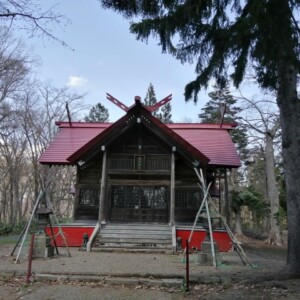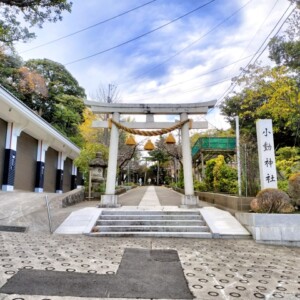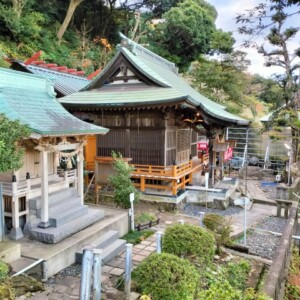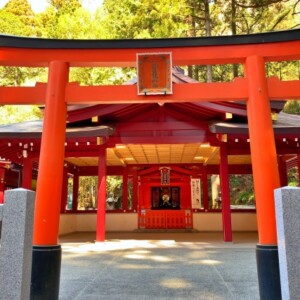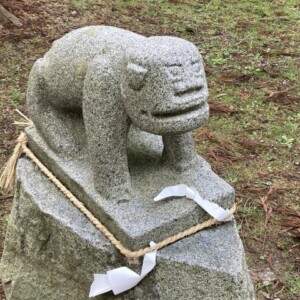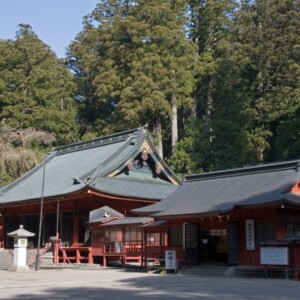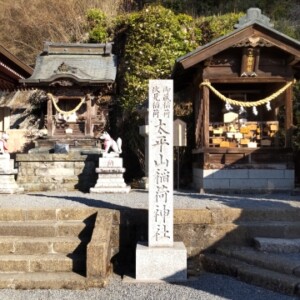
Morito-jinja Shrine|Complete guide to the history, highlights, and worship information of this historic shrine
Morido Shrine, located on Morido Beach in Hayama-cho, Kanagawa Prefecture, is a historic shrine founded by Minamoto no Yoritomo some 850 years ago. Fuji and Enoshima from the shrine grounds facing the sea, and has been selected as one of the “50 Best Scenic Spots in Kanagawa” as “Morido no Yusho” (Morido’s Evening Sunshine). The shrine is known for its blessings of marriage and safe delivery of children, and its valuable cultural assets, such as the 800-year-old Tobikashi Maki tree, are also a highlight.
Outline and basic information about Morito Shrine
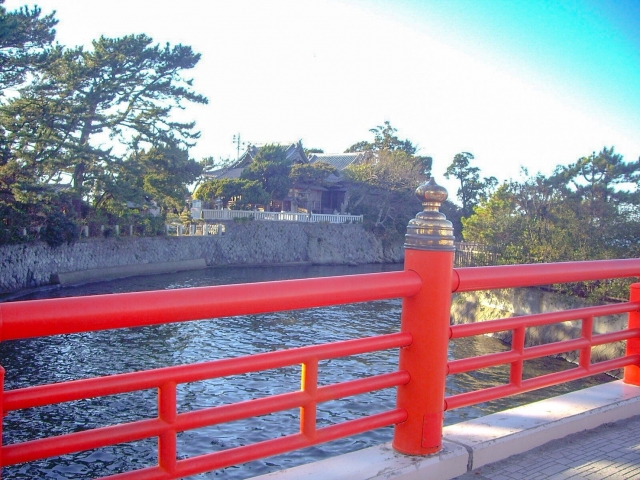
Morito Shrine is located in Hayama-cho, Miura-gun, Kanagawa Prefecture, and is also known as Morito-daimyojin. It was founded by Minamoto no Yoritomo in 1180 and has been deeply worshipped by local people as the general guardian of Hayama.
History and Origin
The founding of Morito Shrine is associated with the deep religious beliefs of Minamoto no Yoritomo. In 1160, Yoritomo was defeated in the Heiji Disturbance and exiled to Izu, where he deeply worshipped Mishima Myojin (now Mishima Taisha Shrine in Shizuoka Prefecture) and prayed for the revival of the Minamoto clan. In 1180 (Jisho 4), Yoritomo’s wish was granted and he was able to rule the country. As a token of his gratitude, he asked for the spirit of Mishima Myojin to be enshrined in a sacred place in Hayama, near Kamakura, which was the origin of Morito Shrine.
According to Azuma Kagami, successive shoguns personally visited the shrine to perform such military events as horseback archery, kasagake, and sumo wrestling. When disasters occurred, prayers for blessings were offered, and the area was also important as a sacred place for Nanase purification. It was also a place of prayer for the Miura party in particular.
The shrine continued to be revered by the Hojo and Ashikaga clans, and in 1591, Tokugawa Ieyasu donated seven koku of the shrine’s territory. Throughout its long history, the shrine has been visited by many famous people, including Mitsukuni Tokugawa in 1674 and Empress Dowager Eisho in 1892.
Gods and Benefits
Two deities are enshrined at Morito Shrine. The two main deities are Oyamatsumi-no-mikoto and Kotoshironushi-no-mikoto.
Gionshi-no-mikoto is known as the god of the mountains and the sea, and is believed to bring blessings for the development of industry and the safety of the family. Kotoshironushi no Mikoto is also known as Ebisu-sama, or Ebisu-sama, and is believed to be the patron god of fishing and commerce.
Since ancient times, Morito Shrine has been known for a wide range of blessings, including good luck and bad luck, easy childbirth, child bearing, good marriage, family safety, business prosperity, traffic safety, fulfillment of love, and improvement of arts and crafts. It is especially famous as a god of marriage and safe delivery of children, and has long been revered as such in the haiku, “Mairare-are-yo kobo no fuku sazukari ni” (“Mairare-are-yo kobo no fuku sazukari ni”). Even today, many worshippers from all over Japan visit the shrine to pray for easy childbirth and the treasure of a child.
Highlights of Morito Shrine
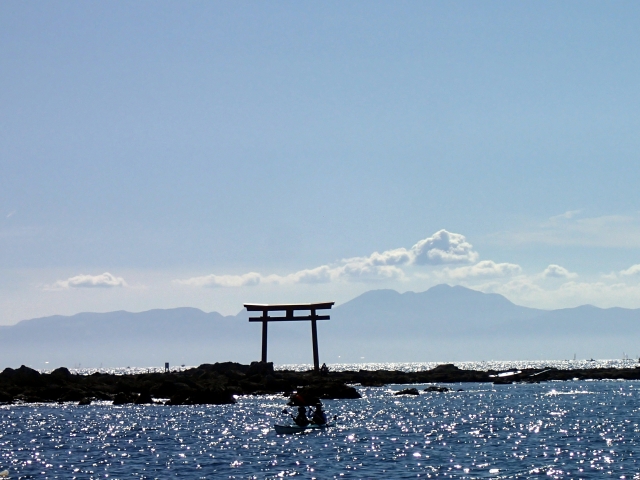
Morito Shrine is a shrine with a unique charm that takes advantage of its location facing the sea. The shrine grounds are dotted with many valuable cultural assets and natural attractions.
Architectural and Structural Attractions
The main shrine of Morito Shrine was built in the Kamakura period (1185-1333), and the present structure was constructed in the Azuchi-Momoyama period (1568-1600), boasting a history of more than 400 years. This main shrine is designated as an important cultural property of Hayama Town and is a structure of great historical value. On a clear day, the beautiful clear blue ocean can be seen from the main shrine, giving visitors a refreshing feeling.
The structure of the temple grounds is also unique, with a slope leading up to the front of the main shrine, which is directly connected to the parking lot, providing a barrier-free design that allows everyone from babies to the elderly to visit the shrine with peace of mind. There are no steep stairs, and the stairs that have been installed are equipped with handrails, making it safe for pregnant women and those with small children to visit the shrine.
The “Misogibashi Bridge” leading from the shrine grounds to Morido Beach has been selected as one of the “100 Best Bridges in Kanagawa” and is a symbolic link between the shrine and the sea. Crossing Misogibashi Bridge, visitors can immediately reach the sandy beach of Morido Kaigan.
Nature and scenic beauty
The greatest attraction of Morito Shrine is its perfect location facing the sea. The view of Sagami Bay from the shrine grounds is breathtaking, and on a clear day, one can see Mt. The sunset is especially beautiful and has been selected as one of the “50 Best Scenic Spots in Kanagawa” as “Morido no Yusho” (Morido Sunset).
From the beach behind the temple grounds, you can see the red torii gate and the Hayama Lighthouse (Yujiro Lighthouse) on Nashima (Nashima Island), which is located approximately 700 meters offshore. The island is dedicated to Ryugu-sama, a deity of the sea who has long been worshipped by fishermen and other local people as a god of the sea who prays for safe voyages and bountiful catches of fish. The view of the island glowing red in the evening sun is so beautiful that one may lose track of time.
The sacred tree, a hibikyakushin, is said to be about 800 years old and is said to have sprouted after flying from Mishima Myojin when Yoritomo visited the shrine. The sight of this ancient tree standing out to sea is extremely rare and has been designated as one of the “100 Famous Trees of Kanagawa” and a Hayama Town-designated natural monument. Its unique appearance can be seen from the Morido Coast side of the Morido River estuary at Yamisogibashi Bridge.
The pine tree standing on a rock towering over the sea behind the temple precincts is called “Sengan Matsu. The name comes from a legend that when Yoritomo stopped by the pine tree on his way to Kinugasa Castle, the Miura clan’s stronghold, he praised the pine tree as “a rare pine tree indeed.
Cultural Properties and Important Collections
Morito Shrine preserves many valuable cultural assets. The Koshinto (a pagoda of the God of Worship) in the precincts of the shrine is designated as an important cultural property by the town of Hayama, and is the only Koshinto in Hayama dedicated to Sarutahiko, the Great Goddess of the Divine.
Among them, the monument in honor of Dr. Bälz and Minister Martino is designated as an important cultural property by Hayama Town. Dr. Bälz and Minister Martino visited Hayama in the early Meiji period (1868-1912) and introduced the area as a suitable place for recreation, which led to the construction of many villas for the Imperial Family and high-ranking government officials. The Hayama Imperial Villa was one of them, and the Emperor Taisho often spent his convalescent period at the Hayama Imperial Villa, which was also the place of his death.
Other monuments along the shoreline, such as the Monument to the Ruins of Minamoto no Yoritomo’s Annex and the Monument to Yujiro Ishihara, commemorate famous people associated with Hayama in a wide range of periods from the Kamakura period (1185-1333) to the Showa period (1926-1989), and serve as valuable historical materials about Hayama.
Visiting and Worship Information
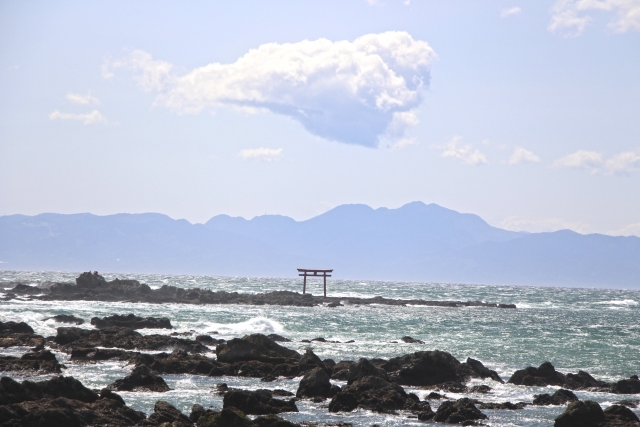
Morito Shrine is open 24 hours a day, 7 days a week and welcomes many worshippers throughout the year. Visitors can worship in peace and quiet in this sacred space facing the sea.
Worship Etiquette and Manners
Visiting Morito Shrine is in accordance with the general manners of shrine visits. First, bow before passing through the torii gate and walk down the path, avoiding the center of the path. After purifying your hands and mouth at the hand- and mouth-cleansing booth, proceed to the main shrine building.
At the main shrine, worship in the manner of ni-worship, two beats, one clap, one bow. Put your money in the offering box, ring the bell, bow deeply twice, clap your hands twice in front of your chest, and bow deeply once more. When you visit the shrine, be mindful and express your gratitude and wishes.
Smoking is prohibited on the grounds of Morito Shrine, and visitors are asked to take any garbage they bring into the shrine with them. Please refrain from making noise and other activities that may disturb others, and be sure to behave in a manner befitting a sacred place.
Annual and Seasonal Events
Various Shinto rituals and events are held throughout the year at Morito Shrine. On the 1st and 15th of each month, the Tsukikubusai and Tsukiji Matsuri are held at 9:00 a.m. to pray for the safety and prosperity of the community.
In June, a special ritual called “Shiokagura” is held. This is an important festival to give thanks to the god of the sea. On the occasion of the grand festival held once every five years, a ritual called “Otohime-sama Ryugu-sama (visit to the dragon palace)” is also held, in which visitors cross to Najima to visit the dragon palace.
Autumn marks the Shichi-Go-San season, when many families visit the shrine from October to November to pray for the healthy growth of their children. Morito Shrine also holds exhibitions and reservations for Shichi-Go-San costumes and offers commemorative photo services.
During the year-end and New Year’s holidays, the shrine is crowded with visitors for Hatsumode, or New Year’s visits to pray for good luck, good luck against bad luck, and family safety. The view of the first sunrise from the temple grounds is especially beautiful, creating a sacred atmosphere that is perfect for welcoming the New Year.
Red Seal and Good Luck Charm Information
At Morito Shrine, red seals, good luck charms, and omikuji are available at the awarding office from around 9:00 a.m. to 4:00 p.m. The hours are subject to change without notice. Hours are subject to change without notice, so it is recommended to check in advance.
One popular good luck charm is the “Onegai Kaigai Mamori,” a love charm with a pink bivalve shell motif. This is a reference to the fact that Morito Shrine is famous as a god of marriage, and is loved by many visitors.
One of the specialties of Morito Shrine is the “tai-mikuji” (tai fortune). It costs 500 yen and is a popular souvenir of a visit to the shrine.
A special amulet is also available for those who wish for easy childbirth or the birth of a child, and is valued by those who seek the blessings that only Morito Shrine, known since ancient times for its “blessings for children,” can offer. There is also a wide selection of amulets for various wishes such as traffic safety, academic achievement, and business prosperity.
Access and Information
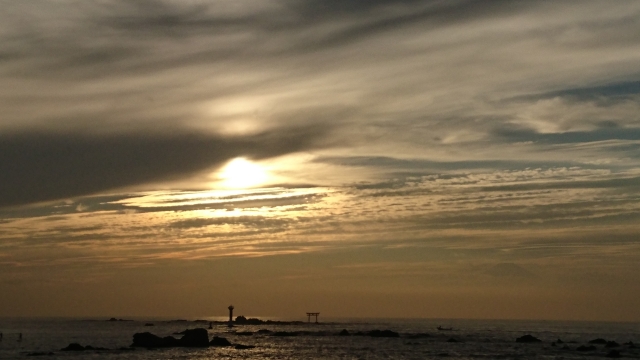
Morito Shrine is located along the coast in the town of Hayama, Kanagawa Prefecture, and is easily accessible by both public transportation and private vehicles.
Transportation Access
For easy access by train and bus, take the Keihin Kyuko Bus bound for Hayama-Ishiki (coast-bound) from the No. 3 bus stop at the east exit of Zushi Station on the JR Tokaido and Yokosuka Lines or the No. 2 bus stop at the south exit of Zushi and Hayama Station on the Keikyu Zushi Line. The shrine is only a one-minute walk from the bus stop.
To access the shrine by car, take the Yokohama-Yokosuka Road Zushi IC, which is about 15 minutes away. After exiting the Zushi IC, go straight through the Nagara intersection, go under the tunnel, and turn left at the Nagisabashi intersection (on the side of Yo Menya Goemon). Go straight at the Hayama-Motomachi intersection (Lawson is on the left), cross the Moritobashi bridge, go straight for about 100 meters, and then turn right. After passing through the torii gate, go straight down the approach to the temple, and the parking lot is on the left side of the approach.
The nearest bus stop, Morito Shrine, is right in front of the shrine, so first-time visitors will have no trouble getting there. Morido Beach, cafes, and restaurants are scattered in the surrounding area, making it possible to enjoy sightseeing in Hayama in addition to visiting the shrine.
Hours of Admission, Fees, and Parking Information
Morito Shrine is open 24 hours a day, and admission is free. However, the shrine is open from approximately 9:00 a.m. to 4:00 p.m. for the awarding of omamori (charms and talismans) and for the reception of red seals. Since the opening hours of the awarding office are subject to change without notice, we recommend that visitors wishing to receive charms and red seals call in advance to confirm the hours.
There is a parking lot for visitors to the temple grounds, which can accommodate 105 standard-sized vehicles. Visitors may use the parking lot for up to 30 minutes free of charge, and those who receive prayers or attend weddings may use the lot for up to 2 hours free of charge. The parking lot opens from 9:00 a.m. to 4:00 p.m. on weekdays, but hours may vary on weekends, holidays, and during the summer pay-per-use period.
Operated as Times Morito Daimeishin Parking Lot, the parking lot charges a maximum of 1,100 yen until 24:00 on weekdays and 1,700 yen on weekends and holidays. 220 yen is the base rate for 30 minutes, and rates are subject to change during certain periods. Microbuses (up to 29-person capacity) can be parked, but advance notice is required. Large buses (capacity of 30 or more) are not allowed to use the parking lot.
The parking lot may be closed all day due to festivals and other events, so it is recommended to check new information in advance. Please be careful of visitors and other vehicles in the parking lot, and avoid noise and other activities that may disturb others.
<Address> 1025 Horiuchi, Hayama-cho, Miura-gun, Kanagawa Prefecture, 240-0112
Reference site
Morito Shrine (Morito-daimyojin) official website: https://www.moritojinja.jp/



